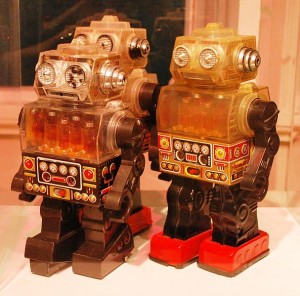Aye, robot: Tiny techno tools can remove heavy metals from water
May 26, 2016Imagine a scene that sounds like it’s straight out of “Star Trek”: a scientist releases thousands of tiny robots into a heavily contaminated water supply. Within an hour, the water’s almost clean.

According to an article from Water Online, this story isn’t science fiction at all. Researchers from Singapore, Germany and Spain have created tiny, pollution-fighting robots that are self-propelled, reusable and (let’s be honest) really, really cool.
The scientists say the microbots are made of “of nanosized multilayers of graphene oxide, nickel, and platinum, providing different functionalities. The outer layer of graphene oxide captures lead on the surface, and the inner layer of platinum functions as the engine decomposing hydrogen peroxide fuel for self-propulsion, while the middle layer of nickel enables external magnetic control of the microbots.”
In other words, the robots run on a fuel whose byproduct is water and oxygen, they pull heavy metals out of the water, and they can be controlled. Better yet, the metals they extract can be recovered, then recycled.
Heavy metals, including lead, are a byproduct of many industries. These harmful pollutants turn up in water supplies and can be challenging to remove. The microbots not only do it easily, quickly and effectively (the study states that they reduced heavy metals from 1000 ppb to below 50 ppb in an hour), they do it without creating more pollution.
Furthermore, the scientists are excited because it looks like these tiny robots have other environmental uses — and may even be used in medicine.
All we can say is, make it so!